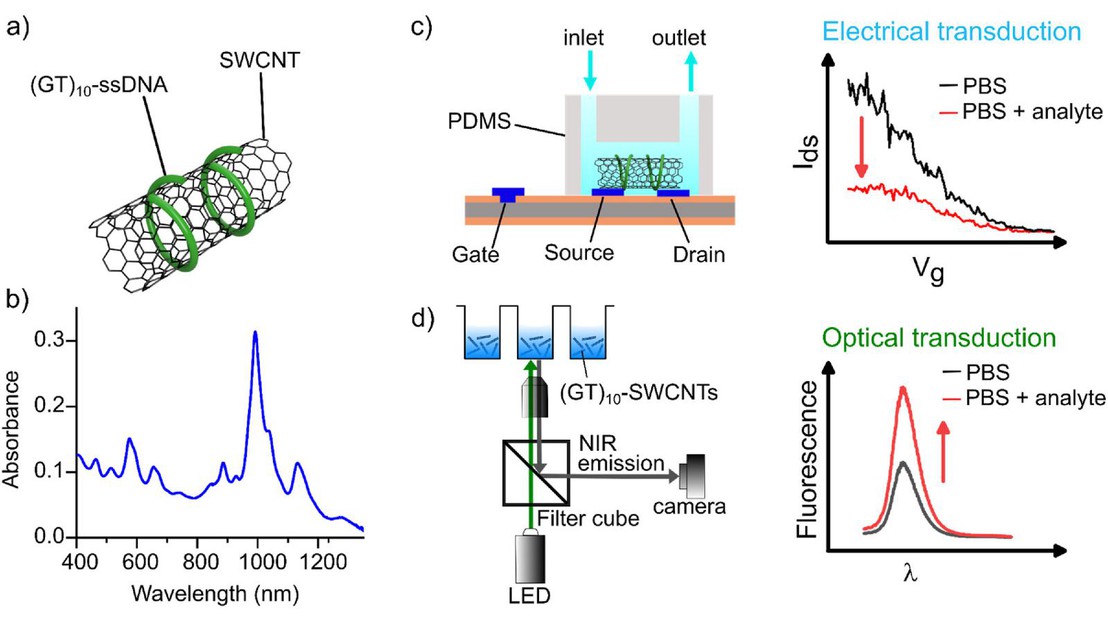Transduction modes of DNA-wrapped SWCNT nanosensors

© 2022 EPFL
Congratulations to Dr. Pierrick Clément, former Postdoc at LMIS1, for his new publication entitled "Comparison of electrical and optical transduction modes of DNA-wrapped SWCNT nanosensors for the reversible detection of neurotransmitters" in the journal "Biosensors and Bioelectronics"
In this study, we compare the electrical and optical signal transduction of nanoscale biosensors based on singlewalled carbon nanotubes (SWCNTs). Solution processable single-stranded (ss) DNA-wrapped SWCNTs were used for the fabrication of the distinct sensors. For electrical measurements, SWCNTs were assembled from solution onto pre-patterned electrodes by electric-field-assisted assembly in field-effect transistor (FET) configuration. A combination of micro- and nano-fabrication and microfluidics enabled the integration into a sensing platform that allowed real-time and reversible detection. For optical measurements, the near-infrared (NIR) fluorescence of the SWCNTs was acquired directly from solution. The detection of important biomolecules was investigated in high-ionic strength solution (0.5xPBS). Increase in fluorescence intensities correlated with a decrease in the SWCNTs electrical current and enabled detection of the important biomolecules dopamine, epinephrine, and ascorbic acid. For riboflavin, however, a decrease in the fluorescence intensity could not be associated with changes in the SWCNTs electrical current, which indicates a different sensing mechanism. The combination of SWCNT-based electrical and optical transduction holds great potential for selective detection of biomarkers in next generation portable diagnostic assays.
For more details, please visit: https://doi.org/10.1016/j.bios.2022.114642
This work was partially funded by the Deutsche Forschungsgemeinschaft (DFG, German Reuter Foundation) under Germany’s Excellence Strategy – EXC 2033–390677874 – RESOLV. This work is supported by the Center for Solvation Science ZEMOS“ funded by the German Federal Ministry of Education and Research BMBF and by the Ministry of Culture and Research of Nord Rhine- Westphalia Funded by the VW foundation. This work was supported by the Fraunhofer Internal Programs under Grant No. Attract 038-610097. Part of the funding came from the European Research Council (ERC) under the European Union’s Horizon 2020 research and innovation program (ERC-2016-ADG, Project “MEMS 4.0” Grant 742685.